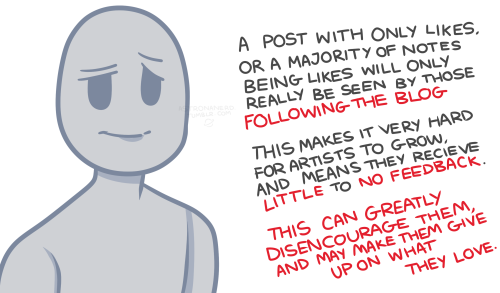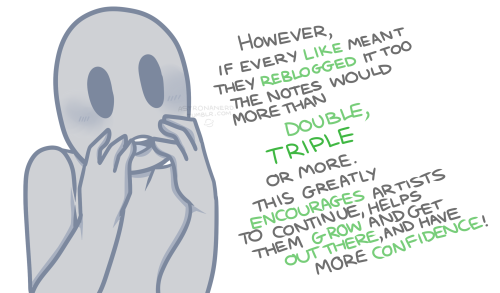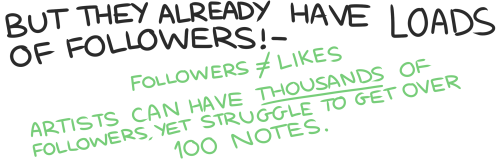How To Avoid White Room Syndrome
How to avoid White Room Syndrome
by Writerthreads on Instagram
A common problem writers face is "white room syndrome"—when scenes feel like they’re happening in an empty white room. To avoid this, it's important to describe settings in a way that makes them feel real and alive, without overloading readers with too much detail. Here are a few tips below to help!
Focus on a few key details
You don’t need to describe everything in the scene—just pick a couple of specific, memorable details to bring the setting to life. Maybe it’s the creaky floorboards in an old house, the musty smell of a forgotten attic, or the soft hum of a refrigerator in a small kitchen. These little details help anchor the scene and give readers something to picture, without dragging the action with heaps of descriptions.
Engage the senses
Instead of just focusing on what characters can see, try to incorporate all five senses—what do they hear, smell, feel, or even taste? Describe the smell of fresh bread from a nearby bakery, or the damp chill of a foggy morning. This adds a lot of depth and make the location feel more real and imaginable.
Mix descriptions with actions
Have characters interact with the environment. How do your characters move through the space? Are they brushing their hands over a dusty bookshelf, shuffling through fallen leaves, or squeezing through a crowded subway car? Instead of dumping a paragraph of description, mix it in with the action or dialogue.
Use the setting to reflect a mood or theme
Sometimes, the setting can do more than just provide a backdrop—it can reinforce the mood of a scene or even reflect a theme in the story. A stormy night might enhance tension, while a warm, sunny day might highlight a moment of peace. The environment can add an extra layer to what’s happening symbolically.
Here's an example of writing a description that hopefully feels alive and realistic, without dragging the action:
The bookstore was tucked between two brick buildings, its faded sign creaking with every gust of wind. Inside, the air was thick with the scent of worn paper and dust, mingling with the faint aroma of freshly brewed coffee from a corner café down the street. The wooden floorboards groaned as Ella wandered between the shelves, her fingertips brushing the spines of forgotten novels. Somewhere in the back, the soft sound of jazz crackled from an ancient radio.
Hope these tips help in your writing!
More Posts from Sleepdeprivedskelton and Others
The fundamentals of Magic
I finally got around to writing a guideline for my magic system. As this was for my own use, i didn't put much effort into formatting or story-writing, but i thought i would share regardless.
General Concept:
Magic exists as an energy found in the "Third Realm," a shadow-like domain composed entirely of magical energy.
The First Realm is the physical world, and the Second Realm is the immaterial realm of the gods. The Third Realm is a non-physical shadow of the physical world composed entirely of magical energy.
All living creatures in the First Realm have a faint connection to the Third Realm, naturally drawing a small amount of magic into the physical world.
The "gods" of the second realm exist by the energy of the third realm, but exist as a sort of undefined halfway point between the first and third realms. Their domains are composed of magic with the illusion of physicality. The existence of the dead in this realm pose major questions on the nature of the soul that I honestly don't feel like trying to explain.
more on this later i think.
See [[Realms]]
Mechanics:
Larger creatures can channel more magic due to their greater connection to the Third Realm.
This is tied to a creature's volume, but has a small effect. Humans and Dragons have far more magic than one might expect from their size.
Dragons are something of a special case that will be expanded on later.
A large and small human will have a negligible difference in access to magic.
A ant will have less access to magic than a deer. etc.
Animals generally have far less accessible magic than sentient races, but special cases have been known to surface.
plants have almost no perceivable magic, this is thought to be a result of not having a soul or blood.
Magic in living beings is more stable and "pure" compared to the chaotic energy found directly in the Third Realm. Magic is "filtered" when it is pulled between realms by a living force, although the mechanism behind this is not understood.
Using magic depends greatly on what medium is used to control it.
Ember magic must be used by channeling magic from the Third Realm into the physical world without drawing it into one's own body, otherwise you risk mana sickness.
Dragon Magic uses dragon bone as either an amplifier or a battery for magic, allowing one to slowly accumulate large stores of magic which can be unleashed without loss.
"natural" magic is magic drawn directly from the user's body. This method must be used as a sort of signal current to activate and use other types of magic. It is the most widespread form, and also the weakest on its own, as humans have a very limited amount of natural magic at any given time. Think of it like blood, when you run low, you make more. You can't lose very much without feeling some serious effects.
When using Ember magic, natural magic is channeled from the user to maintain the connection to the third realm, and to direct the flow of the raw or chaotic third realm magic. This imposes a hard limit on how long an Embermancer can operate.
In draconic casting, raw magic is used to "break the seal" an unleash what is stored, but is otherwise preserved, making this an extremely efficient way to use large amounts of magic.
When casting without a medium, magic may flow from any part of the body, but most commonly the hands. Running low on internal magic will cause exhaustion and may bring similar symptoms to complete bodily exhaustion such as hallucinations, unconsciousness and cardiac arrest. If you run completely out of internal magic, you will die, although most will fall unconscious before this point, similar to how you will pass out and begin to breathe again if you hold your breath too long. If magic is being continually drawn from you, by a formulated spell or Ember channeling, for example, your body will rapidly breakdown to generate the deficit energy drawn from you. This is known as "Burnout".
Special Materials:
Dragon bone is prized for its ability to hold and amplify magic, allowing spellcasters to channel larger spells.
Ember acts as a conduit for magic. It allows magicians to draw vast amounts of energy from the Third Realm with minimal personal expenditure, but with significant risks. When in use, Ember generates a significant amount of heat. Ember takes the form of a black, basalt-like material interspersed with brilliant orange luminous crystals. The crystal formations are the actual Ember, with the black material being similar to a dross.
Ember prisms, cut from higher-grade Ember, are coveted for their increased effectiveness and reduced heat buildup. However, overheated Ember prisms can be extremely dangerous to the user. Despite their name, Prisms are not a specific shape. Ember is often found in pentagonal prism form in small samples, but very large masses can have a wide range of crystal forms. Ember can be cut to any shape. It is traditionally cut to 2-6" rods and used in a similar fashion to a wand. They are often shaped to maximize skin contact to reduce the effects of Ember-burn.
Overheated Prisms can cause serious burns, and have a chance to explode when overheated. Larger masses have the potential to run away while under heavy use, creating a huge spike in heat as the Ember begins drawing magic by it's own power. This almost always leads to the violent destruction of of the prism and the surrounding area. The only way to stop a runaway reaction is to quickly cool the mass below the critical threshold.
Runaway spells are not true spells. The original spell usually falls apart near instantly as the stone switches from a controlled stream of magic into an overflow of raw energy. This uncontrolled flood of energy usually ignites anything nearby within seconds. See [[The Helebrost Incident]].
Risks and Side Effects:
Drawing raw magic from the Third Realm into one's body, rather than expelling it directly into the world can cause "mana sickness," which manifests as nausea, muscle cramps, seizures, coma, spontaneous bleeding, and even death if overexposed. the condition generally lasts about 24 hours, while your body quickly attempts to prevent breakdown from the influx of chaotic magic.
"Burnout" occurs when a magician's body is destroyed by excess "dirty" magic drawn directly from the Third Realm, or is reduced directly into energy while overcasting, leading to violent immolation or explosion.
Ember-Specific Risks:
Prolonged use of Ember can cause mundane heat burns, and "Ember-burn"; a mostly harmless condition where the stone seeps into the user's skin, causing dark scars, patterns, itching, occasional numbness, and other irritating effects. In very extreme cases, Ember will begin to crystalize directly on, in, or even under the user's skin, sometimes causing frostbite-like damage and intense pain.
Magicians using Ember typically channel magic directly through it into the world, avoiding the chaotic energy's harmful effects on their bodies. See "Burnout"
Historical Context -- to be expanded
Horus Tobb discovered Ember magic but died from burnout while demonstrating its use to the Magician's guild in Tarbrind. This tragedy led to a global increase in interest for magical research.
The rediscovery of Magnus Helderon's Divine Theory provided a deeper understanding of the nature and mechanics of magic. See [[Magic and the Second Realm - Ember and Bone]]
The Helebrost Incident - the first recoded runaway of an Ember Prism. A 33" diameter Ember Sphere used for conducting research at the Helebrost University entered a meltdown state after a research team attempted to transmute a mass of pig iron directly into gold. The resulting inferno burned down nearly 3.5 square miles (9 square km) of the the surrounding city in a blaze which lasted nearly a week.





10 Non-Lethal Injuries to Add Pain to Your Writing
While lethal injuries often take center stage, non-lethal injuries can create lasting effects on characters, shaping their journeys in unique ways. If you need a simple way to make your characters feel pain during a scene, here are some ideas:
Sprained Ankle
A common injury that can severely limit mobility, forcing characters to adapt their plans and experience frustration as they navigate their environment.
Rib Contusion
A painful bruise on the ribs can make breathing difficult and create tension, especially during action scenes, where every breath becomes a reminder of vulnerability.
Concussion
This brain injury can lead to confusion, dizziness, and mood swings, affecting a character’s judgment and creating a sense of unpredictability in their actions.
Fractured Finger
A broken finger can complicate tasks that require fine motor skills, causing frustration and emphasizing a character’s dependence on their hands.
Road Rash
The raw, painful skin resulting from a fall can symbolize struggle and endurance, highlighting a character's resilience in the face of physical hardship.
Shoulder Dislocation
This injury can be excruciating and often leads to an inability to use one arm, forcing characters to confront their limitations while adding urgency to their situation.
Deep Laceration
A cut that requires stitches can evoke visceral imagery and tension, especially if the character has to navigate their surroundings while in pain.
Burns
Whether from fire, chemicals, or hot surfaces, burns can cause intense suffering and lingering trauma, serving as a physical reminder of a character’s past mistakes or battles.
Pulled Muscle
This can create ongoing pain and restrict movement, providing an opportunity for characters to experience frustration or the need to lean on others for support.
Tendonitis
Inflammation of a tendon can cause chronic pain and limit a character's ability to perform tasks they usually take for granted, highlighting their struggle to adapt and overcome.
Looking For More Writing Tips And Tricks?
Check out the rest of Quillology with Haya; a blog dedicated to writing and publishing tips for authors! Instagram Tiktok


burning text gif maker
heart locket gif maker
minecraft advancement maker
minecraft logo font text generator w/assorted textures and pride flags
windows error message maker (win1.0-win11)
FromSoftware image macro generator (elden ring Noun Verbed text)
image to 3d effect gif
vaporwave image generator
microsoft wordart maker (REALLY annoying to use on mobile)
you're welcome
NEED HELP WRITING? (a masterlist)
I have likely not added many that I've reblogged to this list. Please feel free to roam my blog and/or ask/message me to add something you'd like to see on this list!
Synonym Lists
Look by @writers-potion
Descriptors
Voices by @saraswritingtipps
Show, Don't Tell by @lyralit
Tips & Tricks
5 Tips for Creating Intimidating Antagonists by @writingwithfolklore
How To (Realistically) Make a Habit of Writing by @byoldervine
Let's Talk About Misdirection by @deception-united
Tips to Improve Character Voice by @tanaor
Stephen King's Top 20 Rules for Writers posted by @toocoolformedschool
Fun Things to Add to a Fight Scene (Hand to Hand Edition) by @illarian-rambling
Questions I Ask My Beta Readers by @burntoutdaydreamer
Skip Google for Research by @s-n-arly
Breaking Writing Rules Right: Don't Write Direct Dialogue by @septemberercfawkes
Databases/Resources
International Clothing
Advice/Uplifting
Too Ashamed of Writing To Write by @writingquestionsanswered
"Said" is Beautiful by @blue-eyed-author

words to use instead of ________
"Mad"
aggravated, angry, annoyed, boiling, cross, enraged, exasperated, fuming, furious, heated, incensed, indignant, irate, irritable, livid, offended, outraged, riled, steamed, storming, upset
"Nice"
amiable, charming, cordial, courteous, delightful, favorable, friendly, genial, gentle, gracious, helpful. inviting, kind, lovely, obliging, peaceful, peachy, pleasant, polite, swell, sympathetic, tender, welcoming, well-mannered, winning
"Pretty"
alluring, appealing, attractive, beautiful, charming, cute, delightful, desirable, elegant, eye-catching, fair, fascinating, gorgeous, graceful, intriguing, lovely, pleasing, striking, stunning, sweet
"Said"
alleged, argued, asked, asserted, babbled, bellowed, bragged, commented, complained, cried, declined, demanded, denied, encouraged, expressed, giggled, growled, inquired, moaned, nagged, rebuked, rebutted, replied, rejected, retorted, roared, scolded, shrieked, shrugged, stated, taunted, vowed, warned, whined, whispered, yelled
"Went"
avoid, bolt, bound, depart, exit, escape, flee, fly, hike, hop, jaunt, jolt, journey, leap, leave, lurch, march, mosey, move, pace, parade, pass, progress, retreat, saunter, scoot, skip, split, step, stride, stroll, tour, travel, vanish
more words to use instead other words to use instead another list of words to use instead







it sucks so bad that 'lightning magic' in every media is just some pathetic little strands of electricity. i wanna see some LIGHTNING. show me a magic setting where lightning magic lights up a room like the sun, and the bolt is only visible as an afterimage burned into your vision. I wanna see someone cast lightning and have the thunder rattling the room and shaking everyone to their core. i want lightning magic to be a split second blast of so much power it leaves everyone's senses reeling. c'mon guys don't you know what real lightning looks like? we can be doing so much better than this.
-
 archivistreimon reblogged this · 2 weeks ago
archivistreimon reblogged this · 2 weeks ago -
 sugareimon liked this · 2 weeks ago
sugareimon liked this · 2 weeks ago -
 corallove liked this · 2 weeks ago
corallove liked this · 2 weeks ago -
 ecclipz3 liked this · 3 weeks ago
ecclipz3 liked this · 3 weeks ago -
 blitztheglitch liked this · 3 weeks ago
blitztheglitch liked this · 3 weeks ago -
 alame11n liked this · 3 weeks ago
alame11n liked this · 3 weeks ago -
 acethespace liked this · 3 weeks ago
acethespace liked this · 3 weeks ago -
 yourladyofmercy liked this · 3 weeks ago
yourladyofmercy liked this · 3 weeks ago -
 lnaax15 liked this · 3 weeks ago
lnaax15 liked this · 3 weeks ago -
 lunaluvsu4eva liked this · 3 weeks ago
lunaluvsu4eva liked this · 3 weeks ago -
 auburnmonroe liked this · 3 weeks ago
auburnmonroe liked this · 3 weeks ago -
 shiptalia-sea-of-stars liked this · 3 weeks ago
shiptalia-sea-of-stars liked this · 3 weeks ago -
 revyluvr liked this · 3 weeks ago
revyluvr liked this · 3 weeks ago -
 koowins liked this · 3 weeks ago
koowins liked this · 3 weeks ago -
 unnpopularpoop-blog liked this · 3 weeks ago
unnpopularpoop-blog liked this · 3 weeks ago -
 neurodivergence-as-a-human reblogged this · 3 weeks ago
neurodivergence-as-a-human reblogged this · 3 weeks ago -
 ashishere0w0 liked this · 3 weeks ago
ashishere0w0 liked this · 3 weeks ago -
 chaoticmessybitch liked this · 3 weeks ago
chaoticmessybitch liked this · 3 weeks ago -
 fluffy-hopscotch liked this · 3 weeks ago
fluffy-hopscotch liked this · 3 weeks ago -
 shining-splashstar liked this · 3 weeks ago
shining-splashstar liked this · 3 weeks ago -
 did-idisturbyourselectivenapping liked this · 3 weeks ago
did-idisturbyourselectivenapping liked this · 3 weeks ago -
 lovemomoblog-blog liked this · 3 weeks ago
lovemomoblog-blog liked this · 3 weeks ago -
 madelinebell liked this · 3 weeks ago
madelinebell liked this · 3 weeks ago -
 sojirosteacup liked this · 3 weeks ago
sojirosteacup liked this · 3 weeks ago -
 stupidsandwitch3 liked this · 3 weeks ago
stupidsandwitch3 liked this · 3 weeks ago -
 spookybaggyboy liked this · 3 weeks ago
spookybaggyboy liked this · 3 weeks ago -
 jestersprivilegee liked this · 3 weeks ago
jestersprivilegee liked this · 3 weeks ago -
 sparklingsilvermagnolias reblogged this · 3 weeks ago
sparklingsilvermagnolias reblogged this · 3 weeks ago -
 thattalltransgirl reblogged this · 3 weeks ago
thattalltransgirl reblogged this · 3 weeks ago -
 iamtechnos-world liked this · 3 weeks ago
iamtechnos-world liked this · 3 weeks ago -
 saturnsmoontitan liked this · 3 weeks ago
saturnsmoontitan liked this · 3 weeks ago -
 myspacethothardy liked this · 3 weeks ago
myspacethothardy liked this · 3 weeks ago -
 d-weebletzpri liked this · 3 weeks ago
d-weebletzpri liked this · 3 weeks ago -
 d-weebletzpri reblogged this · 3 weeks ago
d-weebletzpri reblogged this · 3 weeks ago -
 technicallyasoul liked this · 3 weeks ago
technicallyasoul liked this · 3 weeks ago -
 floatingwaffle-blob liked this · 3 weeks ago
floatingwaffle-blob liked this · 3 weeks ago -
 midnight-wing liked this · 3 weeks ago
midnight-wing liked this · 3 weeks ago -
 midians-world liked this · 3 weeks ago
midians-world liked this · 3 weeks ago -
 themaddierthehatter liked this · 3 weeks ago
themaddierthehatter liked this · 3 weeks ago -
 hinny-canons liked this · 3 weeks ago
hinny-canons liked this · 3 weeks ago -
 inmyownlittlecorner5 liked this · 3 weeks ago
inmyownlittlecorner5 liked this · 3 weeks ago -
 grumpymowse liked this · 3 weeks ago
grumpymowse liked this · 3 weeks ago -
 brightlybound liked this · 3 weeks ago
brightlybound liked this · 3 weeks ago -
 sirikenobi liked this · 3 weeks ago
sirikenobi liked this · 3 weeks ago -
 constitutionalweasleymonarchy reblogged this · 3 weeks ago
constitutionalweasleymonarchy reblogged this · 3 weeks ago -
 lsambury-blog liked this · 3 weeks ago
lsambury-blog liked this · 3 weeks ago -
 corpsesticks liked this · 3 weeks ago
corpsesticks liked this · 3 weeks ago -
 a-storm-of-nightengales liked this · 3 weeks ago
a-storm-of-nightengales liked this · 3 weeks ago -
 lucyid8 liked this · 3 weeks ago
lucyid8 liked this · 3 weeks ago

World building fiction writer, He/Him or Skele/ton.Ask me anything :)Praise the worms that break the clay,Where maggots dance and life decay For corpse lays down, and death takes hold, And in the rot, life new unfolds.
36 posts